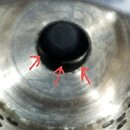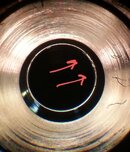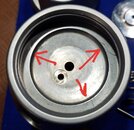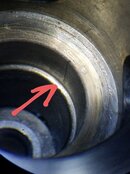Angelo, I'm not sure you are fully understanding the difference in seating forces between balanced and unbalanced 2nd stages, or at least you are not articulating it well. Yes, an unbalanced reg has more force against the seat when not pressurized than a balanced reg. But there is no difference when they are pressurized; they both have exactly the force needed to seal the seat at a given cracking pressure. When the reg is adjusted to the point of barely freeflowing, that means that the seat is not pressing against the orifice with sufficient force to close the valve. It doesn't matter whether it is just a large spring (unbalanced) or a small spring and a portion of IP (balanced) providing that force against the downstream force of the air coming from the 1st stage.
It makes no sense to use an inline tool with the purge pressed, because the whole point of the inline tool is to be able to adjust the 2nd stage while pressurized. Once you press the purge, it no longer functions in that way. You could, I guess, attach everything, then turn off the tank, purge to empty the pressure out of the regulator, press the purge, then turn the orifice with the inline tool, then turn the tank back on, check for freeflows, and repeat this process over and over until you have it set where you want it. But that's not really different than simply removing the hose and adjusting the orifice with a screwdriver.







